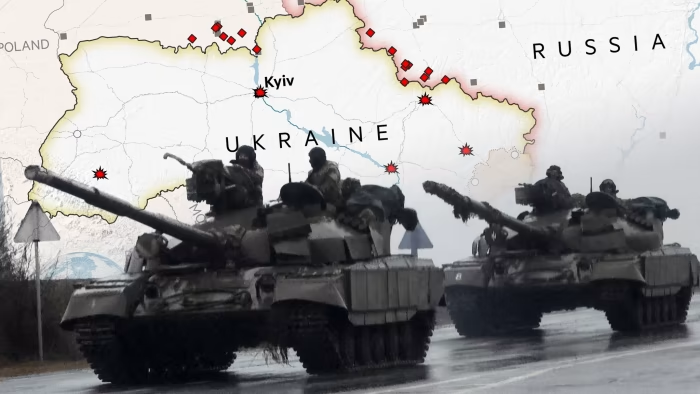Introduction
The conflict between Russia and Ukraine has been ongoing for several years, with the most recent escalation occurring in 2024. The situation has been marked by multiple outbreaks of violence, the displacement of millions of people, and the widespread destruction of cities and infrastructure. In this blog, we will provide an overview of the crisis, including its history, causes, and current developments.
A Brief History of the Conflict
The conflict between Russia and Ukraine can be traced back to the 1990s, when Ukraine declared its independence from the Soviet Union. However, Ukraine's pro-Western orientation and its desire to join NATO and the European Union led to tensions with Russia, which has long been wary of Ukraine's close ties with the West.
In 2014, protests in Ukraine's capital city of Kiev led to the overthrow of the pro-Russian government, which was replaced by a pro-Western government. This led to a crisis in Crimea, where Russia had a significant military presence. In response to the Ukrainian government's decision to suspend its plans to join NATO, Russia annexed Crimea and supported separatist movements in eastern Ukraine.
The conflict in eastern Ukraine has been marked by heavy fighting between Ukrainian government forces and separatist rebels, resulting in thousands of deaths and injuries. The conflict has also led to a significant humanitarian crisis, with millions of people displaced or affected by the violence.
Causes of the Conflict
The conflict between Russia and Ukraine is complex and multifaceted, with several underlying causes contributing to the tensions. Some of the key factors include:
1. Historical ties: Russia and Ukraine have a shared history, with Ukraine being part of the Russian Empire and later the Soviet Union. This has led to a sense of shared identity and cultural heritage among some Ukrainians.
2. Geopolitical rivalries: The conflict is also driven by geopolitical rivalries between Russia and Ukraine, as well as between Russia and NATO. Ukraine's desire to join NATO and the European Union is seen as a threat to Russia's national security.
3. Economic interests: The conflict is also driven by economic interests, particularly in the energy sector. Russia has historically relied on Ukraine as a major transit route for its natural gas exports to Europe.
4. Nationalism: Nationalism has played a significant role in shaping public opinion on both sides of the conflict. Many Ukrainians view themselves as part of a distinct nation with its own language, culture, and history, while many Russians view Ukraine as an integral part of Russian civilization.
Global Consequences of the conflicts
The current war condition is having a significant impact on the global community, including:
1. Economic Instability: The ongoing conflicts are causing significant economic instability, with trade disruptions, currency fluctuations, and inflation affecting countries around the world.
2. Humanitarian Crises: The conflicts are resulting in massive humanitarian crises, with millions of people displaced, injured, or killed.
3. Security Risks: The conflicts are creating significant security risks, with the potential for escalation and nuclear war.
4. Environmental Degradation: The conflicts are also causing environmental degradation, with pollution, destruction of infrastructure, and climate change affecting the region.
Current Developments
In recent months, tensions between Russia and Ukraine have escalated significantly, with multiple outbreaks of violence along the border. The situation has been marked by:
1. Russian troop deployments: Russia has continued Hundreds of UAV and Fighter Jets tens of thousands of troops along entered the Ukraine home land and continuously attacking with tactic and non- tactic weapons.
2. Ukrainian military buildup: In response to Russia's troop deployments, Ukraine has increased its military presence along the border and attacking to Russian land with Missile, UAV and Fighter Jets and multiple rockets
3. Ceasefire agreements: Despite efforts to negotiate a ceasefire agreement, fighting continues to break out along the border.
4. International diplomacy: International leaders Specially Mr. Narendra Modi, Indian Prime minister and Global leader have been engaged in diplomatic efforts to resolve the crisis, with talks between Russian President Vladimir Putin and Ukrainian President Volodymyr Zelensky aimed at finding a peaceful solution.
Conclusion
The conflict between Russia and Ukraine is a complex and multifaceted issue that is driven by historical ties, geopolitical rivalries, economic interests, and nationalism. While efforts have been made to negotiate a ceasefire agreement, fighting continues to break out along the border. As international leaders continue to engage in diplomatic efforts to resolve the crisis, it is essential that they take into account the perspectives and concerns of all parties involved.






